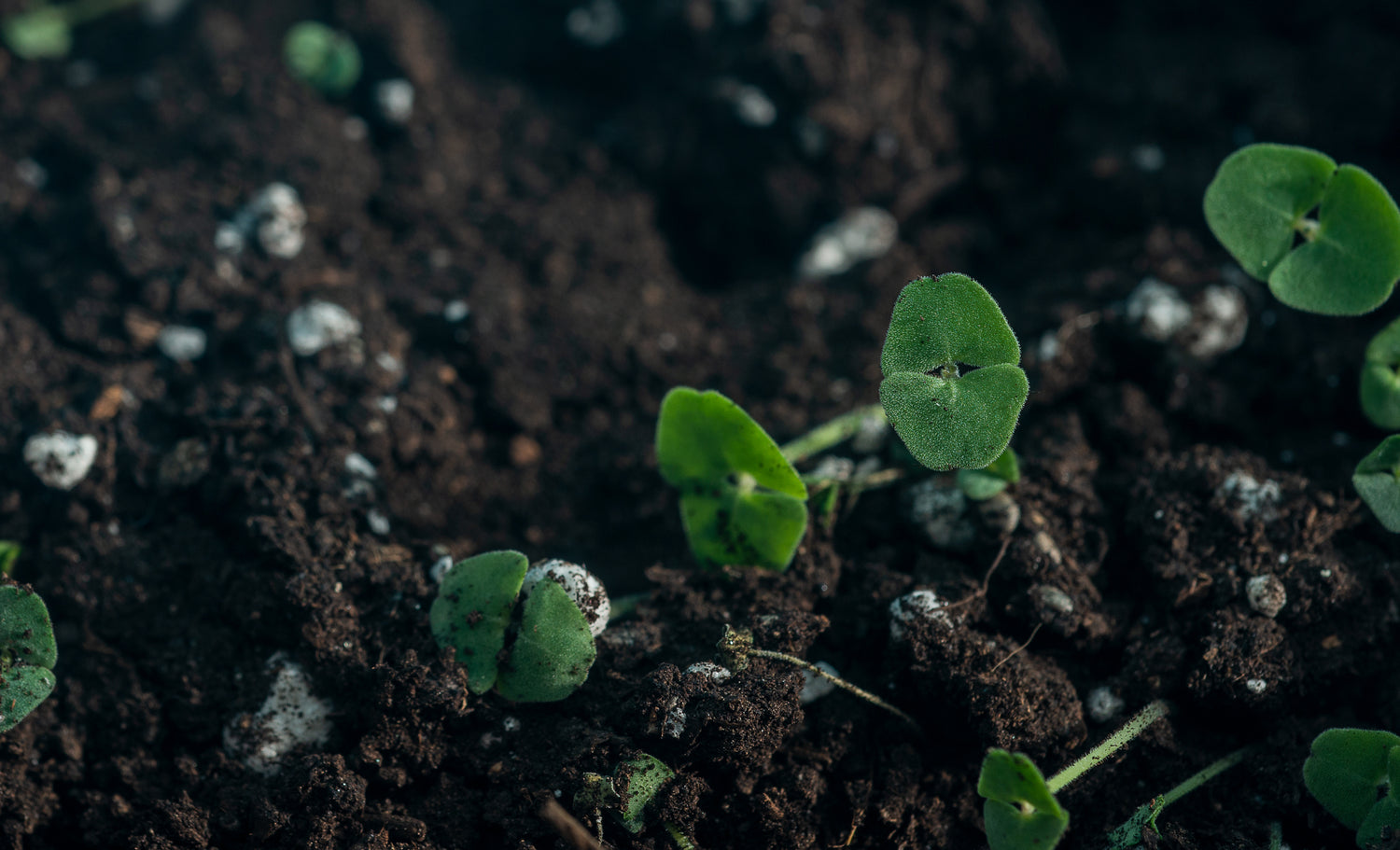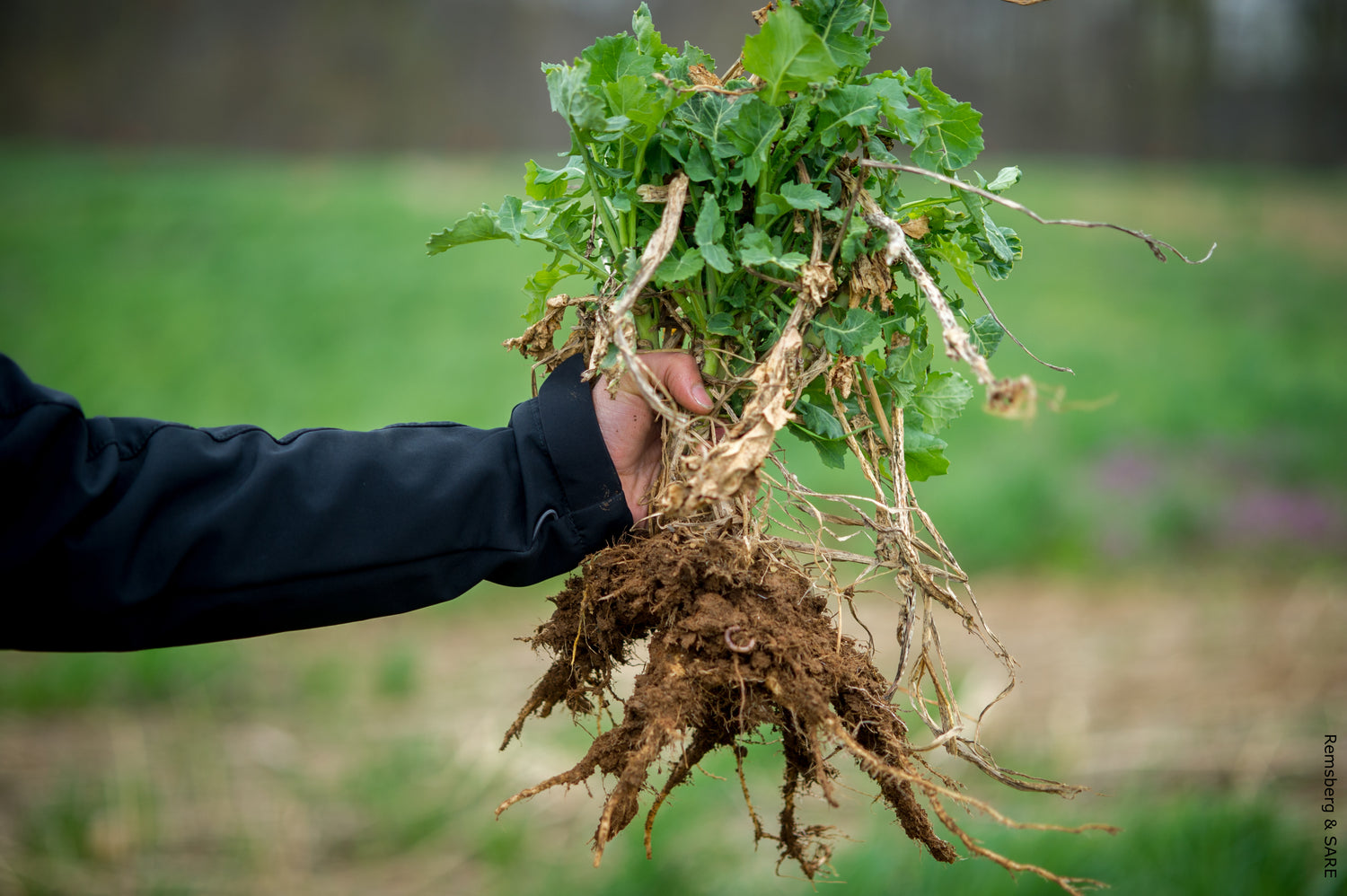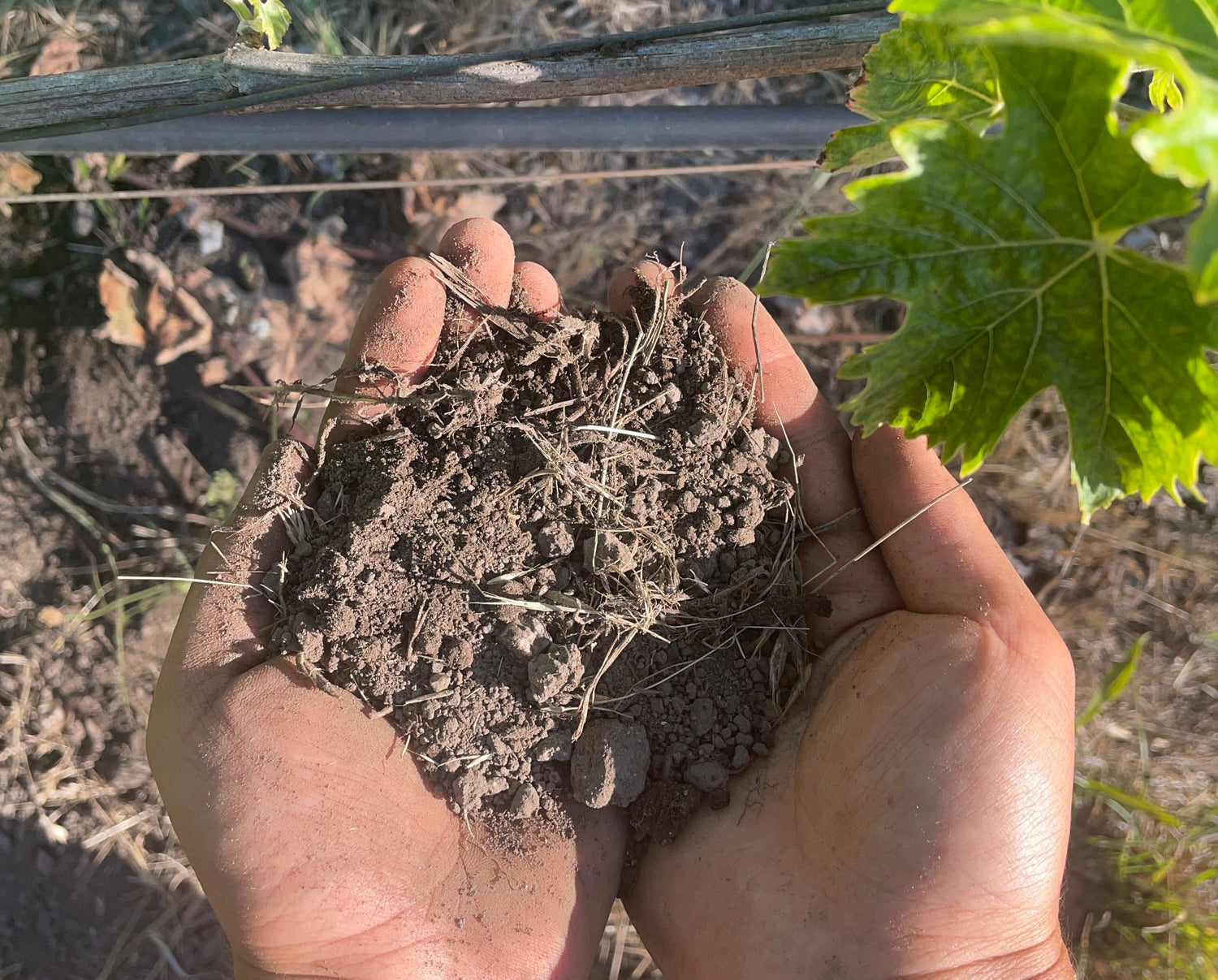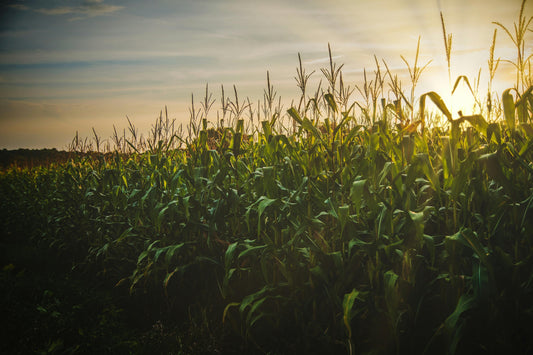California's unique ecosystems and diverse climate make soil understanding and native plant selection essential for creating beautiful, water-efficient landscapes that support local wildlife and reduce maintenance while adapting to the state's natural rainfall patterns and soil conditions.
California Native Plants and Soil Analysis: Your Complete Guide to Sustainable Landscaping
Combining soil analysis with California native plant selection creates sustainable, low-maintenance landscapes that conserve water, support biodiversity, and thrive in local conditions while reducing the need for fertilizers and irrigation.
California's diverse ecosystems and unique climate make soil quality and plant selection critical for stunning, sustainable landscapes. Soil reports provide a detailed analysis of your soil's properties, while curated lists of California native plants ensure compatibility and ecological benefits. This guide explores the diversity of native plants, their soil preferences, and how soil reports paired with plant suitability can transform your garden or landscape into a thriving, eco-friendly haven.
Why Soil and Native Plants Matter in California
California's varied climates—from coastal fog zones to arid deserts—demand a tailored approach to landscaping. Native plant landscapes provide significant water conservation benefits compared to traditional lawns and ornamental plantings. The California Native Plant Society emphasizes that native plants are essential for supporting local ecosystems and wildlife habitats.
Understanding your soil characteristics enables you to select native plants that will naturally thrive without extensive amendments or artificial support. This approach enhances sustainability, supports biodiversity, and creates low-maintenance, resilient gardens that work with California's natural systems rather than against them.
The Diversity of California Native Plants
California's native flora represents a vibrant tapestry of over 6,000 species adapted to the state's diverse ecosystems. From towering coast redwoods to delicate California poppies, these plants offer unmatched beauty and resilience. The California Native Plant Society, founded in 1965, works to conserve and promote these remarkable species throughout the state.
The diversity of California's native plants provides numerous benefits:
- Ecological Benefits: Native plants provide essential habitats for birds, bees, butterflies, and other wildlife, supporting biodiversity and natural pollination networks.
- Aesthetic Variety: Available in diverse colors, sizes, and textures, native plants suit modern, traditional, or xeriscaped garden designs.
- Climate Resilience: Evolved for California's climate patterns, native plants naturally thrive in drought, heat, coastal fog, or seasonal rainfall conditions.
- Low Maintenance: Adapted to local conditions, native plants typically require minimal care once established, reducing long-term garden maintenance.
Soil Preferences of California Native Plants
Matching native plants to your soil's characteristics is fundamental to their success. Understanding how soil factors affect plant selection enables you to create thriving landscapes without extensive soil modification.
Key soil factors that influence native plant selection include:
- Soil pH: Ranges from acidic (pH < 6.5) to alkaline (pH > 7.5). Some natives like manzanita prefer acidic soils, while others like California buckwheat thrive in alkaline conditions.
- Drainage and Texture: Varies from sandy (fast-draining) to clay-heavy (water-retaining). Sandy loams suit poppies and other wildflowers, while heavier soils support shrubs like sages.
- Fertility Levels: Many natives, including desert species, actually prefer low-fertility soils and can be harmed by excessive fertilization.
- Seasonal Moisture: California's Mediterranean climate creates distinct wet and dry seasons that native plants are specifically adapted to handle.
Understanding these soil characteristics reduces the need for amendments and supports truly sustainable, cost-effective landscaping approaches.
How Our Soil Analysis and Plant Matching Service Works
At Alluvial Soil Lab, we provide comprehensive soil analysis paired with our proprietary California native plant matching service. This scientific approach ensures plant selection perfectly matches your site's natural characteristics, creating landscapes that thrive without extensive amendments.
Our soil analysis and plant matching process includes:
- Professional Sample Collection: We guide you through proper sampling techniques, gathering soil from multiple locations at 6-8 inches depth to capture the root zone where plants establish.
- Comprehensive Laboratory Analysis: Our testing reveals pH, texture, drainage characteristics, organic matter content, nutrient levels, and other critical factors affecting plant success.
- Proprietary Plant Matching: We compare your results to our extensive database of over 6,000 California native plant species, identifying those naturally suited to your specific soil conditions.
- Curated Plant Selection: Our horticulturists hand-select native plants for your site, balancing ecological benefits, aesthetics, and maintenance requirements to create your personalized plant list.
Example: Our Plant Matching Service for Sandy, Alkaline Soil
Here's how our soil analysis and plant matching service works in practice. A recent client's soil analysis revealed challenging but workable conditions:
- pH: 7.8 (alkaline)
- Texture: Sandy loam with excellent drainage
- Fertility: Low organic matter and nutrients
- Moisture: Dries quickly, limited water retention
Using our proprietary plant matching database, we curated a tailored list of California native plants perfect for these specific conditions:
Our Recommended Plants for These Soil Conditions
- California Poppy (Eschscholzia californica): Vibrant orange blooms, thrives in low-fertility, well-drained soils and requires minimal water once established.
- California Buckwheat (Eriogonum fasciculatum): Drought-tolerant shrub that supports beneficial insects and pollinators while tolerating alkaline conditions.
- Black Sage (Salvia mellifera): Aromatic native shrub ideal for sandy soils, attracts bees and hummingbirds with minimal care requirements.
- White Sage (Salvia apiana): Distinctive silver foliage, extremely low water needs, naturally tolerates low fertility and alkaline conditions.
- California Fuchsia (Epilobium canum): Brilliant red tubular flowers, thrives in alkaline, dry conditions while attracting hummingbirds.
- Desert Mallow (Sphaeralcea ambigua): Orange blooms throughout the growing season, specifically adapted to low-nutrient, desert-like soils.
Plants We Exclude from Recommendations
- Coast Redwood (Sequoia sempervirens): Requires acidic, consistently moist soils with high organic matter content.
- Douglas Iris (Iris douglasiana): Prefers acidic, moisture-retentive soils, not sandy alkaline conditions.
- California Wild Rose (Rosa californica): Needs higher fertility and moisture retention than sandy soils typically provide.
Benefits of Our Soil-Informed Plant Matching Service
Alluvial Soil Lab's comprehensive approach to soil analysis and native plant selection provides numerous advantages for California gardeners:
- Water Conservation: Native plants adapted to your soil type require minimal irrigation, supporting California's water conservation goals.
- Wildlife Support: Native plant gardens provide essential habitat and food sources for local birds, butterflies, and beneficial insects.
- Reduced Maintenance: Plants suited to natural soil conditions resist pests and diseases while requiring minimal fertilization or care.
- Climate Resilience: Native species naturally handle drought, seasonal rainfall patterns, and temperature fluctuations typical of California.
- Cost Effectiveness: Reduced need for soil amendments, irrigation systems, and ongoing maintenance lowers long-term landscape costs.
- Aesthetic Appeal: California natives offer diverse colors, textures, and seasonal interest for beautiful, regionally authentic landscapes.
Getting Started with Our Soil Testing and Plant Matching Service
Ready to create a sustainable California native landscape with our expert guidance? Here's how our process works:
- Initial Consultation: We help you plan sampling locations by identifying different areas of your property that may have varying soil conditions.
- Professional Sample Collection: Following our detailed guidelines, collect soil samples from multiple spots in each area, sampling 6-8 inches deep where plant roots will establish.
- Comprehensive Soil Analysis: Our laboratory provides detailed analysis including pH, texture, organic matter, drainage characteristics, and essential nutrients.
- Expert Plant Matching: We use your soil test results with our proprietary database of over 6,000 California native species to create your personalized plant list.
- Landscape Design Support: Receive detailed recommendations for grouping plants with similar soil and water needs for efficient, beautiful landscapes.
- Implementation Guidance: Get ongoing support for successful planting and establishment of your native plant landscape.
Water-Wise Landscaping with Native Plants
California's water-efficient landscaping requirements, including the Model Water Efficient Landscape Ordinance (MWELO), encourage the use of climate-adapted plants. Native species naturally fit these requirements by:
- Reducing Irrigation Needs: Once established, most natives require little to no supplemental watering beyond natural rainfall.
- Supporting Natural Rainfall Patterns: California natives are adapted to the state's Mediterranean climate with wet winters and dry summers.
- Improving Soil Health: Native plant root systems and leaf litter naturally enhance soil structure and water infiltration.
- Reducing Runoff: Deep-rooted native plants help capture and infiltrate rainwater, reducing stormwater runoff.
Resources for California Native Plant Gardening
California gardeners have access to excellent resources for native plant selection and soil-appropriate landscaping:
- California Native Plant Society (CNPS): Provides comprehensive information about native plants, local chapters, and educational programs. cnps.org
- Calscape: CNPS's online database for finding native plants by location and growing conditions. calscape.org
- UC Agriculture and Natural Resources: Science-based information on sustainable landscaping and soil management. ucanr.edu
- California Department of Water Resources: Water-efficient landscaping guidance and plant selection resources. water.ca.gov
- Be Water Wise: Southern California's resource for water-saving rebates and landscape guidance. bewaterwise.com
Creating Sustainable Landscapes for the Future
California's ongoing water challenges and climate variability make native plant landscaping increasingly important. By understanding your soil characteristics and selecting appropriate native species, you can create landscapes that:
- Conserve precious water resources
- Support declining pollinator populations
- Provide year-round beauty with seasonal interest
- Require minimal maintenance and inputs
- Adapt naturally to changing climate conditions
Conclusion
Soil analysis paired with California native plant selection offers a scientifically sound approach to creating beautiful, sustainable landscapes. By understanding your soil's unique properties and choosing compatible native species, you can establish gardens that conserve water, support wildlife, and provide lasting beauty with minimal maintenance.
The California Native Plant Society, UC Agriculture and Natural Resources, and other authoritative sources provide the scientific foundation and practical guidance needed to succeed with native plant gardening. Whether you're creating a new landscape or transitioning from traditional plantings, soil-informed native plant selection ensures your garden will thrive in harmony with California's natural systems.
Take the first step by collecting soil samples and consulting native plant resources to begin your journey toward a more sustainable, resilient landscape that celebrates California's natural heritage.
Sources
- California Native Plant Society. Official Website and Educational Resources. https://www.cnps.org/
- Calscape. California's Native Plant Gardening Destination. https://calscape.org/
- UC Agriculture and Natural Resources. About UC ANR. https://ucanr.edu/about
- California Department of Water Resources. Water-Efficient Landscaping. https://water.ca.gov/water-basics/conservation-tips/plant-and-landscape-guide
- California Department of Water Resources. Model Water Efficient Landscape Ordinance. https://water.ca.gov/Programs/Water-Use-And-Efficiency/Urban-Water-Use-Efficiency/Model-Water-Efficient-Landscape-Ordinance
- UC Agriculture and Natural Resources. Water-Wise Gardening. https://ucanr.edu/site/uc-master-gardener-program-riverside-county/water-wise-gardening
- Be Water Wise. Garden California Friendly Plant Lists. https://www.bewaterwise.com/












